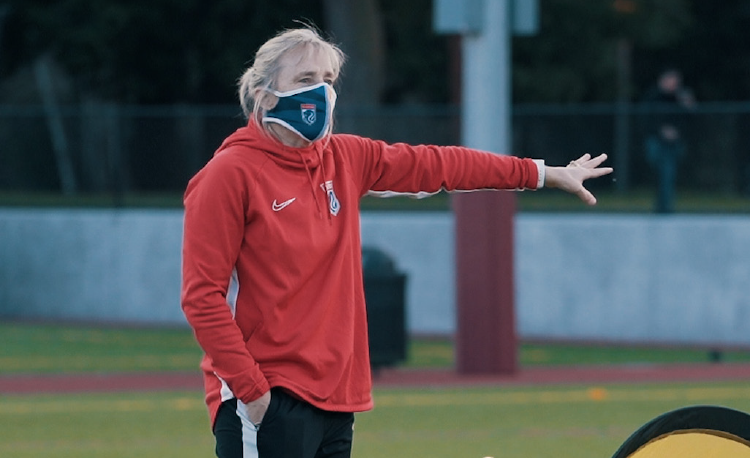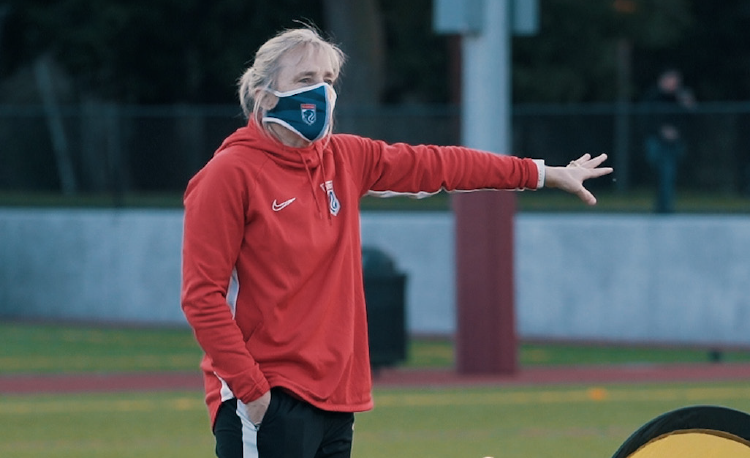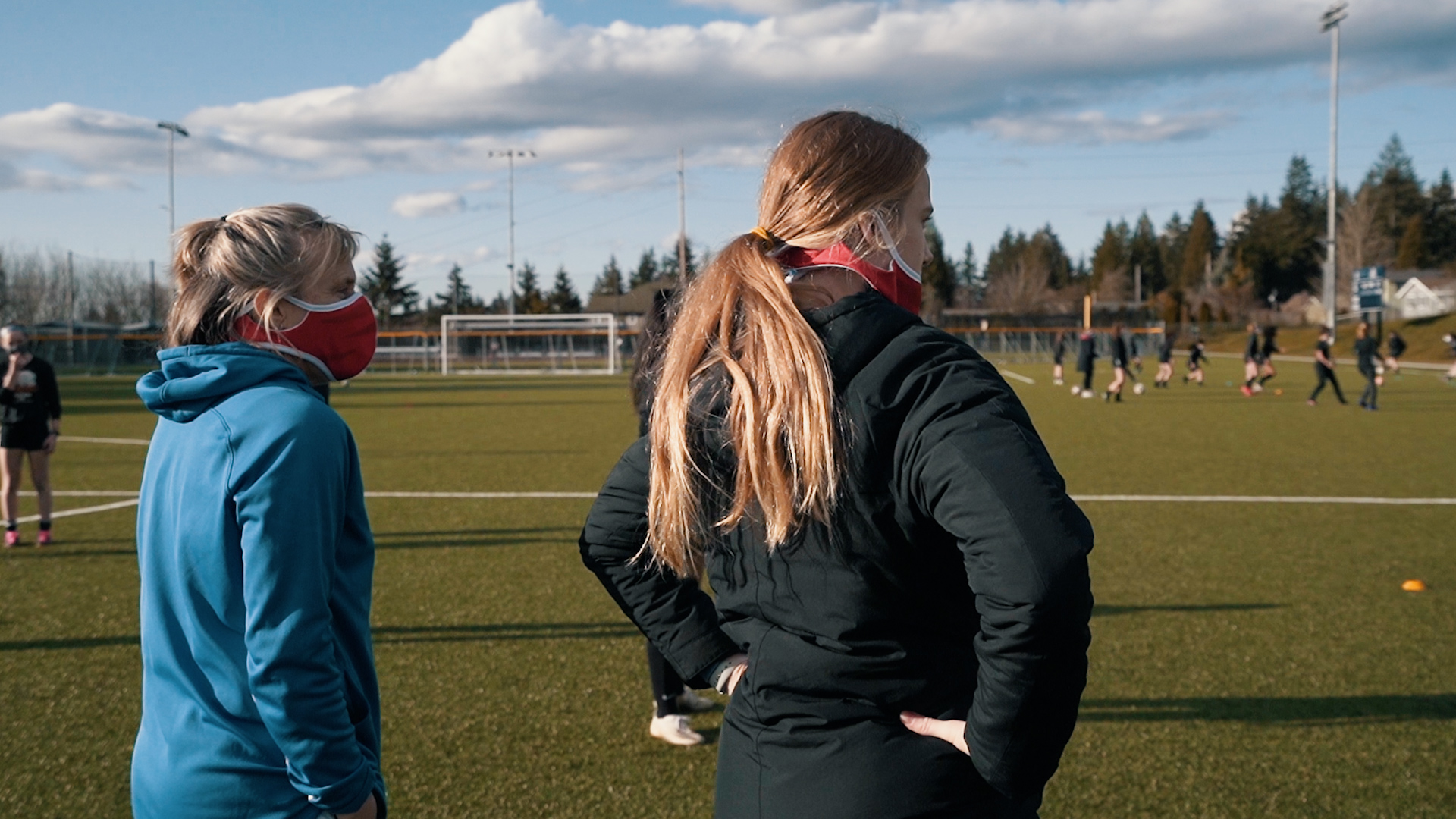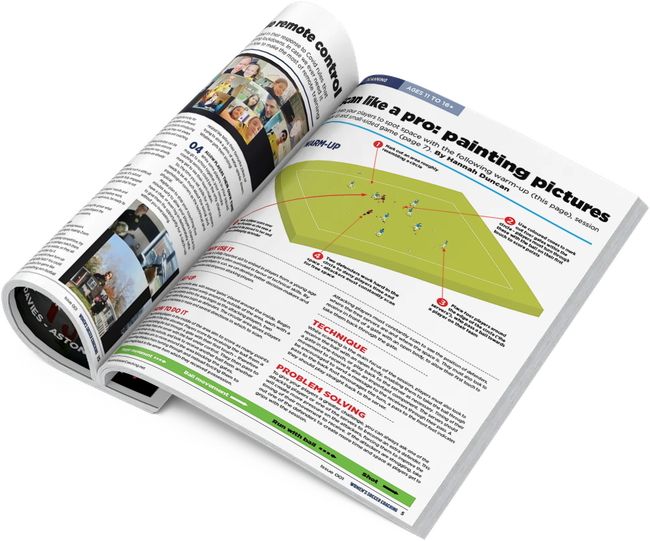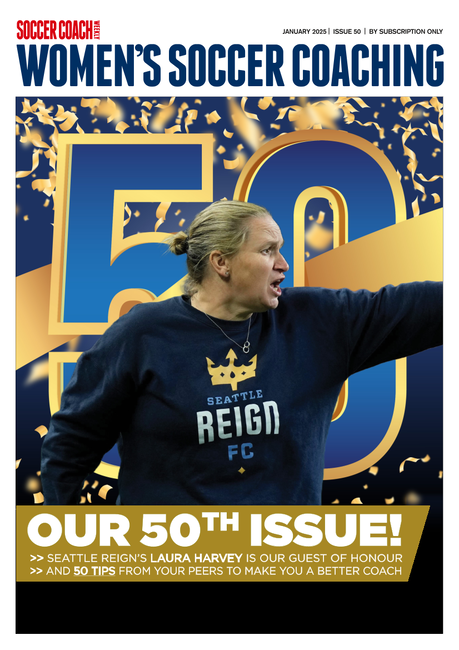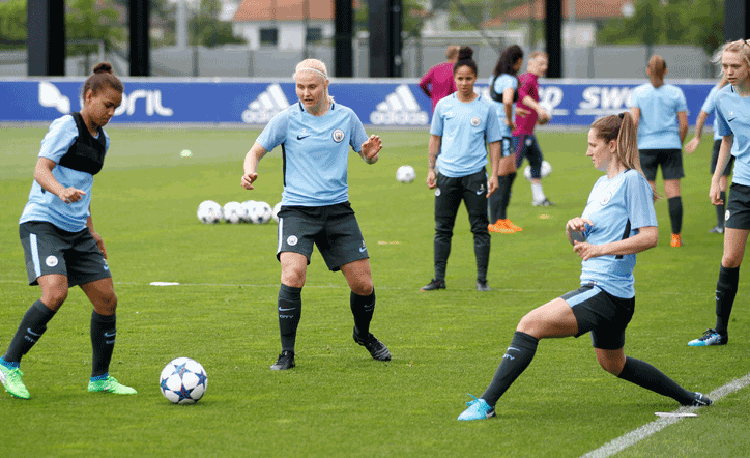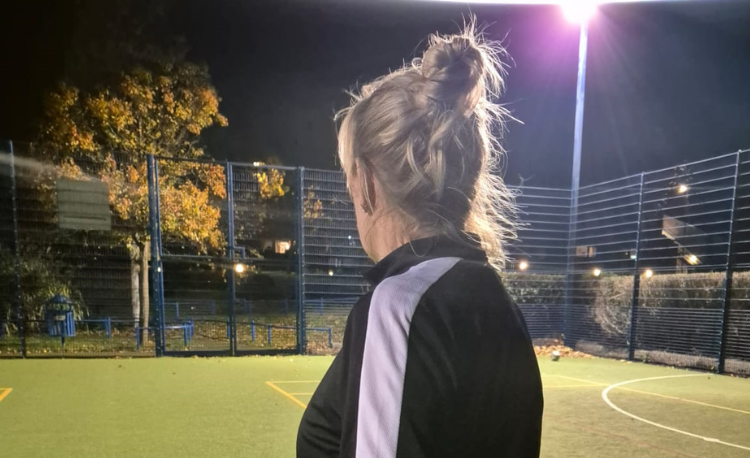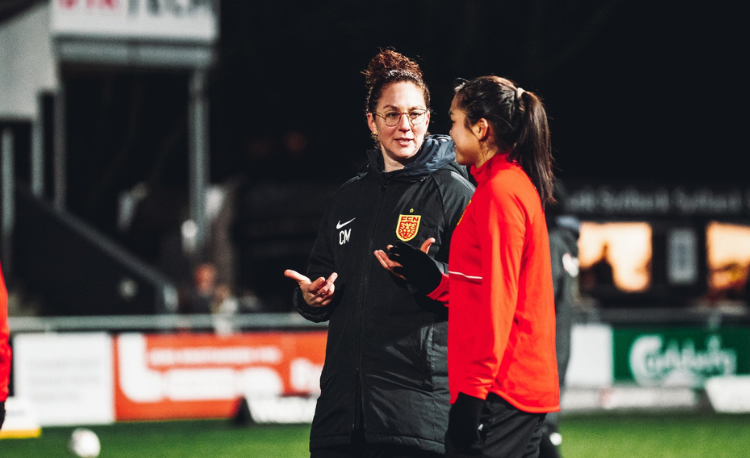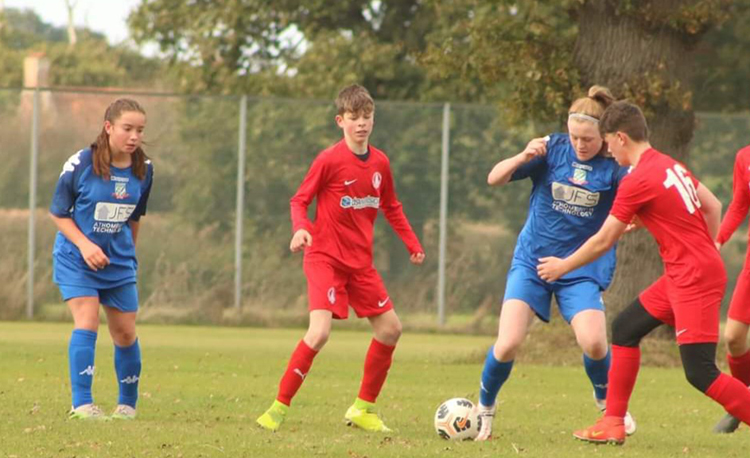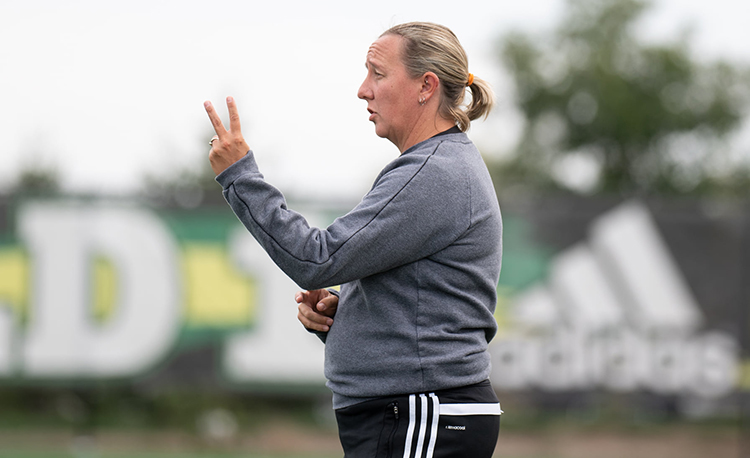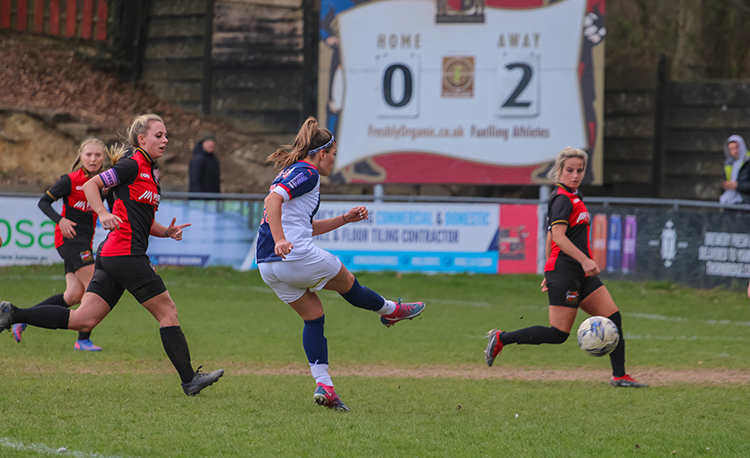You are viewing
1 of your 3 free articles
A reputation in communication
As a World-Cup winning goalkeeper, successful youth coach and head coach of the US Deaf Women’s Team, AMY GRIFFIN knows how to get her message across. She explains her methods to STEPH FAIRBAIRN
In 1991, Amy Griffin - then Amy Allman - was a goalkeeper on the US Women’s National Team squad that won the first-ever FIFA Women’s World Cup.
Fast forward 25 years, to 2016, and Griffin was a world champion again - this time as head coach of the US Deaf Women’s National Team (USDWNT).
The intervening quarter-of-a-century was spent passing on her deep knowledge and infectious enthusiasm to college soccer players - including future World-Cup winning goalkeeper Hope Solo at the University of Washington - and the US Under-20s Women’s National Team.
But Griffin describes the role of head coach of the USDWNT, which she took on in 2015, as “the best gift I’ve been given”
It has also given her new challenges in terms of communication, an area she excels in given her playing and coaching background.
The team is made up of players with hearing impairments of varying levels. “There are very few people on our team that can understand everyone,” Griffin told WSC. “Some read lips, some sign only, some speak only, some do a smattering of everything. Some do charades, which would probably be my go-to most often when I get stuck.
“There are a lot of obstacles on the field. If someone’s running behind you, for example, you can’t tell them to drop. If I turn my head 15 degrees, I’ve just eliminated six or seven players that can’t even read my lips or understand what I might be trying to convey.
“It’s really hard to make sure everyone’s on the same page.”
It is a world Griffin was familiar with before taking the job. Her cousin’s son became deaf following illness and it encouraged her family members to learn sign language.
“I happened to be in college at the time,” Griffin said. “I was really drawn to the animation of it.
“I think the expressions and body language sometimes tell a deeper story than the words that we say. I love watching - even if I’m not sure what people are saying, I can tell the mood behind it and I think it’s really expressive.
“If you ask the players if I sign, they’ll say ‘heavens no, but she tries’. If players sign a little bit slower than their normal cadence, I can understand a lot of it. I’ve picked up a lot and I’ve taken sign language classes.
“I think most of the players appreciate that I try, instead of just turning my back and talking to the interpreter. I don’t ignore the fact that I’m learning.
“Watching the players off the field, integrating in the hearing world, I see how many people shut them out because they’re nervous.
“No-one wants to be forgotten and no-one wants to be not talked to because someone is afraid they don’t know how to communicate. Just try. Get a pen and paper and include everyone.
“I think communication is every bit as important as food, water and shelter. I really do. The more I understand how important communication is, the more I realise I have a long way to go.”
Griffin’s approach to effective communication hinges on two key pillars - the first of which is clarity in messaging
.
“Pick a topic and stay true to that topic,” she advises. “If today you’re working on finding the channels in the wide spaces, make that all you coach. That way, the message has a lot better chance of hitting home.
“Before practice with the USDWNT, I’ll tell them what the practice plan is. So when they take their hearing aids out, or even if it’s via sign language, we know what drill is first, what drill is second and the concepts we’re trying to convey.”
Related Files
The second pillar in Griffin’s communication ethos is transparency.
“Being as honest as possible, and being able to show that things aren’t going perfectly, is important,” she said.
“If you’re out on the field and something that looked great on paper isn’t flowing, instead of getting aggravated or frustrated, sometimes it’s a good time to look inside and see if there’s something you could be doing differently and share that with who you are coaching.”
Other tactics Griffin employs when working with the USDWNT include allowing players a little more time to solve things on their own rather than freezing the game, and showing video clips to the team, with the help of an interpreter.
And many of the lessons Griffin learns with the deaf team, she has put into practice with the hearing teams she works with.
“Being able to show that things aren’t going perfectly is important.”
Her current role - which she took up in 2019 after 24 years coaching at the University of Washington - is as executive director of OL Reign’s academy.
Griffin describes her role as “making sure 200 families and players understand our mission and vision and want to be a part of that”. Much of the role involves cutting through what she calls the “white noise” of youth sports.
She said: “There are a lot of people that think youth sports needs to be the place where you’re promised a college scholarship or a stage where you’re going to make the national team.
“We can help you with that, but our vision is that it’s a by-product. It’s just a bonus.
“Our club really wants to show that we have a lot of great female role models and a few guys that have always thought the women’s game is where it’s at.
“We want to create a platform where it does not matter what level you are, you will still have an amazing coach and you will still get treated like the most valuable person in our club.
“Do we get it right every day? Not even close. But we’re trying.”
‘HOW THE DEAF WORLD CHAMPIONSHIP CHANGED MY PERSPECTIVE’
As head coach, Amy Griffin led the US Deaf Women’s National Team to their second consecutive World Deaf Football Championship title in 2016.
The team went undefeated, beating Russia 3-0 in the final.
Griffin offered a unique perspective on the 2016 Championships. She said: “We were there for three weeks, and it felt like I was the one with a different ability.
“Everyone playing was deaf, the refs were deaf, the coaches were deaf. We were the only team with a hearing coach so we were sort of frowned upon.
“I was the one that was missing all the information. I was the one that was frustrating people.
“I was always confused, I was exhausted and I was trying to figure out what the heck was going on and people weren’t talking to me. I got to live that for three weeks.
“Because of that, I am so much more aware now of all people with a variety of abilities when I have the access and the means to move through life as easily as I can.
“I never would have felt that as deep if I hadn’t been a coach of this team.”
‘MAKE SURE THEY SEE WHAT’S HAPPENING’ - AMY GRIFFIN’S THREE TIPS FOR COACHES WORKING WITH DEAF OR HARD OF HEARING PLAYERS
1. GIVE THEM A LINE OF SIGHT
“Make sure that, when you’re doing a drill, they’re second or third in the line, so they see what’s happening first. They can visually see what you’re trying to create and it doesn’t put them on the spot. Making sure they are in your view when you’re coaching will help bring some calm.”
2. CREATE SOCCER-SPECIFIC SIGNING
“We’ve learned a few signs more specific to soccer. And because of how you would express them on the field, our signs are bigger so everyone can see. We have really quick, animated, large signs. Just a few signs to help integrate the deaf person into a hearing team is super helpful. The kids have fun with it and they learn sign language and then they learn more about deaf culture and the deaf player doesn’t feel so isolated.”
3. DON’T BE AFRAID TO ASK QUESTIONS
“Little things go such a long way, like not being afraid to ask a player a question – somebody might say ‘I don’t want to make her feel uncomfortable’, but she’s going to continue to feel uncomfortable if you don’t say anything.
Sitting down with a deaf player and saying ‘How can I help? What would you like to see?’ means you’re not just going from your knowledge base of not being deaf. The perception of what you think they might need and what they actually need might be completely different.”
It’s clear that, for Griffin and the project she’s building at OL Reign, there is so much more to the game than winning matches. “I’m finding the coaches that want to buy into what we’re doing,” she said. “At the older ages, you have to learn how to compete, and in the oldest age group, you have to find a way to win, within our style of play. “We want supportive coaches that aren’t throwing clipboards and all that stuff.” It is a refreshing attitude for someone with as many accolades as Griffin.
When asked to reflect on what it is like seeing players she has coached at a young age progress, she offers two different examples. The first is seeing some of those involved in her US youth teams make it to the senior side, including Rose Lavelle, while she knows Megan Rapinoe from her college days. “You know you’re doing okay when you still have relationships with some of these players that look back at their time and know that maybe we were one tiny piece [in their careers] and that the environment was good enough that they learned something while they were in it.”
The second example references two players whose futures in the game are yet undefined. Griffin said: “We had a player show up at training [with OL Reign] who is home from college for the summer and wanted to get back on the field with her former club. Her coming back is the best compliment ever.
“When things aren’t going well, I feel the players know what it’s like to be me.”
“We also have a player that’s the number one keeper in the country and will be a senior in high school. She was training for a World Cup that unfortunately she didn’t get to compete in because of Covid.”
Griffin’s role at Reign will see her have a guiding hand in the future careers of many players. But just as important to her is shaping teenagers into adults.
She said: “If we nail the experience, if we can teach girls how to navigate the hard challenges, how to be good teammates and good people, how to have tough conversations, how to receive feedback, how to push the envelope a little bit more than they thought they could and get through to the other side, those are the long-term wins.
“That doesn’t happen in a weekend or even a season. It happens through the long haul of developing and will never end. I think that’s the best part.”
And what has she learned from the teams she coaches? Griffin refers again to the deaf team.
She said: “When things aren’t going well, I feel like the players know what it’s like to be me. They just smile and I know they can see my frustration. “They’re like ‘you’re fine’ and I just take a breath and we move forward. I just wish it was like that in more places in this world. “They give me confidence to just try. Just try.”
Newsletter Sign Up
Newsletter Sign Up
Discover the simple way to become a more effective, more successful soccer coach
In a recent survey 89% of subscribers said Women's Soccer Coaching makes them more confident, 91% said Women's Soccer Coaching makes them a more effective coach and 93% said Women's Soccer Coaching makes them more inspired.
*includes 3 coaching manuals
Get Inspired
All the latest techniques and approaches
Women's Soccer Coaching offers proven and easy to use soccer drills, coaching sessions, practice plans, small-sided games, warm-ups, training tips and advice.
We've been at the cutting edge of soccer coaching since we launched Soccer Coach Weekly in 2007, creating resources for the grassroots youth coach, following best practice from around the world and insights from the professional game.
